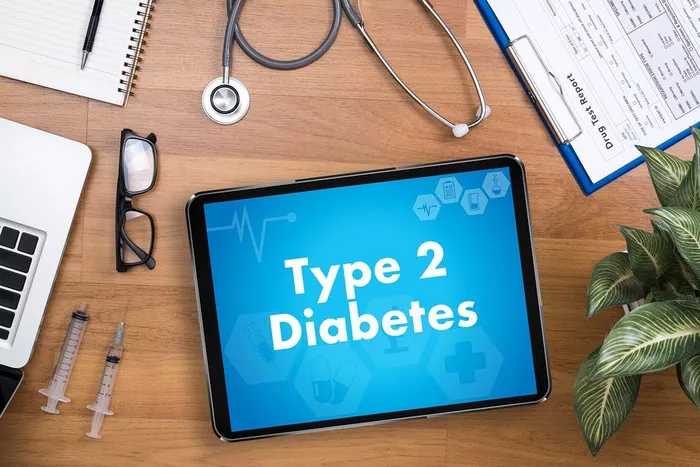Type 2 diabetes is a chronic condition that affects the way the body metabolizes sugar (glucose), a critical source of fuel for the body. Unlike Type 1 diabetes, which is often diagnosed in childhood, Type 2 diabetes is more commonly diagnosed in adults. However, recent trends have shown an increase in Type 2 diabetes diagnoses among younger populations. Understanding the age factors associated with Type 2 diabetes is crucial for prevention, early detection, and effective management of the disease.
This article explores the age-related aspects of Type 2 diabetes, including risk factors, signs and symptoms, prevention strategies, and the implications of early diagnosis. We will examine the age range in which individuals are most at risk, the changing demographics of the disease, and the importance of lifestyle choices in mitigating risk.
Understanding Type 2 Diabetes
What Is Type 2 Diabetes?
Type 2 diabetes is characterized by insulin resistance, where the body’s cells do not respond effectively to insulin, a hormone that regulates blood sugar levels. Over time, the pancreas cannot produce enough insulin to maintain normal glucose levels, leading to elevated blood sugar levels.
Types of Diabetes
Type 1 Diabetes: Typically diagnosed in children and young adults, this autoimmune condition results in the complete destruction of insulin-producing beta cells in the pancreas.
Type 2 Diabetes: The most common form, often developing in adults, but increasingly seen in children and adolescents. It is closely linked to obesity, physical inactivity, and genetic factors.
Gestational Diabetes: Occurs during pregnancy and typically resolves after giving birth, but it can increase the risk of developing Type 2 diabetes later in life.
Age and Risk Factors for Type 2 Diabetes
Typical Age of Onset
Traditionally, Type 2 diabetes has been associated with older age groups, particularly individuals aged 45 and older. However, the age of onset is shifting. Increasingly, children, adolescents, and young adults are being diagnosed with Type 2 diabetes due to rising obesity rates and lifestyle factors.
Adults (45-64 years): This age group historically represents the highest risk for developing Type 2 diabetes. Aging can lead to decreased physical activity, weight gain, and increased insulin resistance.
Older Adults (65 years and older): This group is at an elevated risk due to factors like chronic health conditions, decreased mobility, and dietary changes.
Young Adults (25-44 years): An emerging trend shows an increase in Type 2 diabetes diagnoses in this age group, often linked to obesity and sedentary lifestyles.
Adolescents (12-19 years): The rise in obesity among teenagers has led to a concerning increase in Type 2 diabetes cases in this demographic.
Children (under 12 years): Although still relatively rare, Type 2 diabetes is increasingly being diagnosed in children, particularly those who are overweight or obese.
Demographic Trends in Type 2 Diabetes
The demographic landscape of Type 2 diabetes is changing significantly:
Obesity Epidemic: The prevalence of obesity among children and adolescents has risen dramatically over the past few decades. Obesity is a significant risk factor for developing Type 2 diabetes.
Sedentary Lifestyles: Increased screen time and reduced physical activity contribute to weight gain and insulin resistance, leading to higher diabetes rates among younger populations.
Socioeconomic Factors: Certain socioeconomic groups may have limited access to healthy foods and healthcare, leading to higher rates of obesity and diabetes.
Risk Factors for Type 2 Diabetes by Age
Understanding the risk factors for Type 2 diabetes across different age groups can help identify individuals who may be at risk:
In Adults (45 years and older)
Family History: A family history of diabetes increases the risk of developing the condition.
Obesity: Excess body weight, particularly around the abdomen, is a significant risk factor.
Physical Inactivity: Lack of exercise contributes to weight gain and insulin resistance.
Unhealthy Diet: Diets high in refined carbohydrates, sugars, and unhealthy fats can increase the risk.
Ethnicity: Certain ethnic groups, including African American, Hispanic, Native American, and Asian American populations, are at a higher risk.
In Young Adults (25-44 years)
Obesity: Rising obesity rates are a primary concern for this age group.
Poor Dietary Habits: Increased consumption of fast food and sugary beverages contributes to weight gain.
Lack of Physical Activity: Sedentary behavior, particularly due to desk jobs and leisure activities, increases risk.
Stress: Chronic stress can lead to unhealthy coping mechanisms such as overeating.
In Adolescents (12-19 years)
Obesity: The prevalence of obesity among teenagers is a significant risk factor.
Diet: High consumption of processed foods and low intake of fruits and vegetables.
Physical Inactivity: Increased screen time and reduced physical activity levels.
Psychosocial Factors: Bullying, anxiety, and depression can contribute to unhealthy lifestyle choices.
In Children (under 12 years)
Family History: Children with parents who have Type 2 diabetes are at a higher risk.
Obesity: Excess weight is a significant predictor of Type 2 diabetes in children.
Sedentary Lifestyle: Lack of physical activity contributes to weight gain.
Dietary Habits: Poor nutrition, including high sugar and fat intake.
Signs and Symptoms of Type 2 Diabetes
Recognizing the signs and symptoms of Type 2 diabetes is crucial for early diagnosis and management. Common symptoms include:
- Increased thirst and frequent urination
- Extreme fatigue
- Blurred vision
- Slow-healing sores or frequent infections
- Areas of darkened skin (acanthosis nigricans)
- Unexplained weight loss
In many cases, especially in the early stages, individuals may not experience noticeable symptoms. Regular screenings are essential, especially for those at higher risk.
Diagnosis of Type 2 Diabetes
The diagnosis of Type 2 diabetes involves several blood tests that measure blood sugar levels:
Fasting Plasma Glucose Test: Measures blood sugar after fasting for at least eight hours. A level of 126 mg/dL (7.0 mmol/L) or higher indicates diabetes.
Oral Glucose Tolerance Test (OGTT): Measures blood sugar two hours after drinking a glucose solution. A level of 200 mg/dL (11.1 mmol/L) or higher indicates diabetes.
A1C Test: Measures average blood sugar levels over the past two to three months. An A1C of 6.5% or higher indicates diabetes.
Random Plasma Glucose Test: A blood sample taken at any time, with a level of 200 mg/dL (11.1 mmol/L) or higher indicating diabetes, regardless of the last meal.
Prevention Strategies by Age Group
For Adults (45 years and older)
Maintain a Healthy Weight: Achieving and maintaining a healthy weight can significantly reduce the risk of developing Type 2 diabetes.
Regular Physical Activity: Aim for at least 150 minutes of moderate-intensity exercise each week, such as walking, swimming, or cycling.
Balanced Diet: Focus on a diet rich in whole grains, lean proteins, healthy fats, and plenty of fruits and vegetables while minimizing processed foods and sugars.
Regular Check-ups: Regular medical check-ups and screenings for blood sugar levels can facilitate early detection and intervention.
For Young Adults (25-44 years)
Healthy Eating Habits: Incorporate more whole foods, limit fast food, and be mindful of portion sizes.
Increase Physical Activity: Incorporate physical activity into daily routines, such as taking the stairs instead of the elevator or engaging in recreational sports.
Stress Management: Utilize stress-reducing techniques such as mindfulness, meditation, and physical exercise.
For Adolescents (12-19 years)
Education on Healthy Choices: Schools and parents should educate teenagers on the importance of nutrition and physical activity.
Encouraging Sports and Activities: Promoting participation in sports and physical activities can help combat sedentary behaviors.
Limit Screen Time: Encourage limited screen time and promote outdoor activities.
For Children (under 12 years)
Healthy Family Meals: Encourage families to prepare and eat healthy meals together, fostering positive eating habits.
Active Play: Promote regular active playtime rather than sedentary activities, such as video games or TV.
Routine Health Check-ups: Regular pediatric visits should include assessments of weight, dietary habits, and activity levels.
Conclusion
Type 2 diabetes is a complex condition influenced by a combination of genetic, lifestyle, and environmental factors. While it has traditionally been associated with older adults, the age of onset is shifting, with increasing diagnoses among younger populations. Understanding the age-related aspects of Type 2 diabetes is essential for prevention, early detection, and effective management.
Individuals can take proactive steps at any age to reduce their risk of developing Type 2 diabetes through lifestyle changes, regular check-ups, and awareness of the condition’s symptoms. By fostering a culture of health and wellness, we can work towards reversing the trend of rising diabetes diagnoses and improving the quality of life for individuals affected by this chronic condition.
Related topics:



























